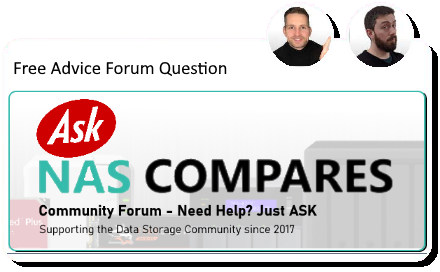05-03-2025, 03:00 AM
Hello! I hope you are doing well and the seagulls are keeping away.
Short question. You have discussed a couple of motherboard bundles that come with a SFF-8643 backplate that allows the installation of 4 additional nvme ssd drives, like the one on the link at the end of this email.
I was wondering - where would you install the nvme backplate in a nas case - e.g. on any of the Jonsbo cases, lets say in this case the Jonsbo N2 or N4.
I have a topic suggestion for a future short video - I have read in multiple place that one shouldn't use nvme ssds on a NAS because the OS can't reclaim storage space that was once in use but has had data deleted, unless the NAS OS uses zfs. Is this true? Why would anyone install SSDs on an Unraid build?
You make sure you have a great summer. Thanks!
https://www.amazon.com/Mini-ITX-Motherboard-Pentium-Processor-SATA3-0/dp/B0D911MFWN?ref_=ast_sto_dp&th=1
Short question. You have discussed a couple of motherboard bundles that come with a SFF-8643 backplate that allows the installation of 4 additional nvme ssd drives, like the one on the link at the end of this email.
I was wondering - where would you install the nvme backplate in a nas case - e.g. on any of the Jonsbo cases, lets say in this case the Jonsbo N2 or N4.
I have a topic suggestion for a future short video - I have read in multiple place that one shouldn't use nvme ssds on a NAS because the OS can't reclaim storage space that was once in use but has had data deleted, unless the NAS OS uses zfs. Is this true? Why would anyone install SSDs on an Unraid build?
You make sure you have a great summer. Thanks!
https://www.amazon.com/Mini-ITX-Motherboard-Pentium-Processor-SATA3-0/dp/B0D911MFWN?ref_=ast_sto_dp&th=1





